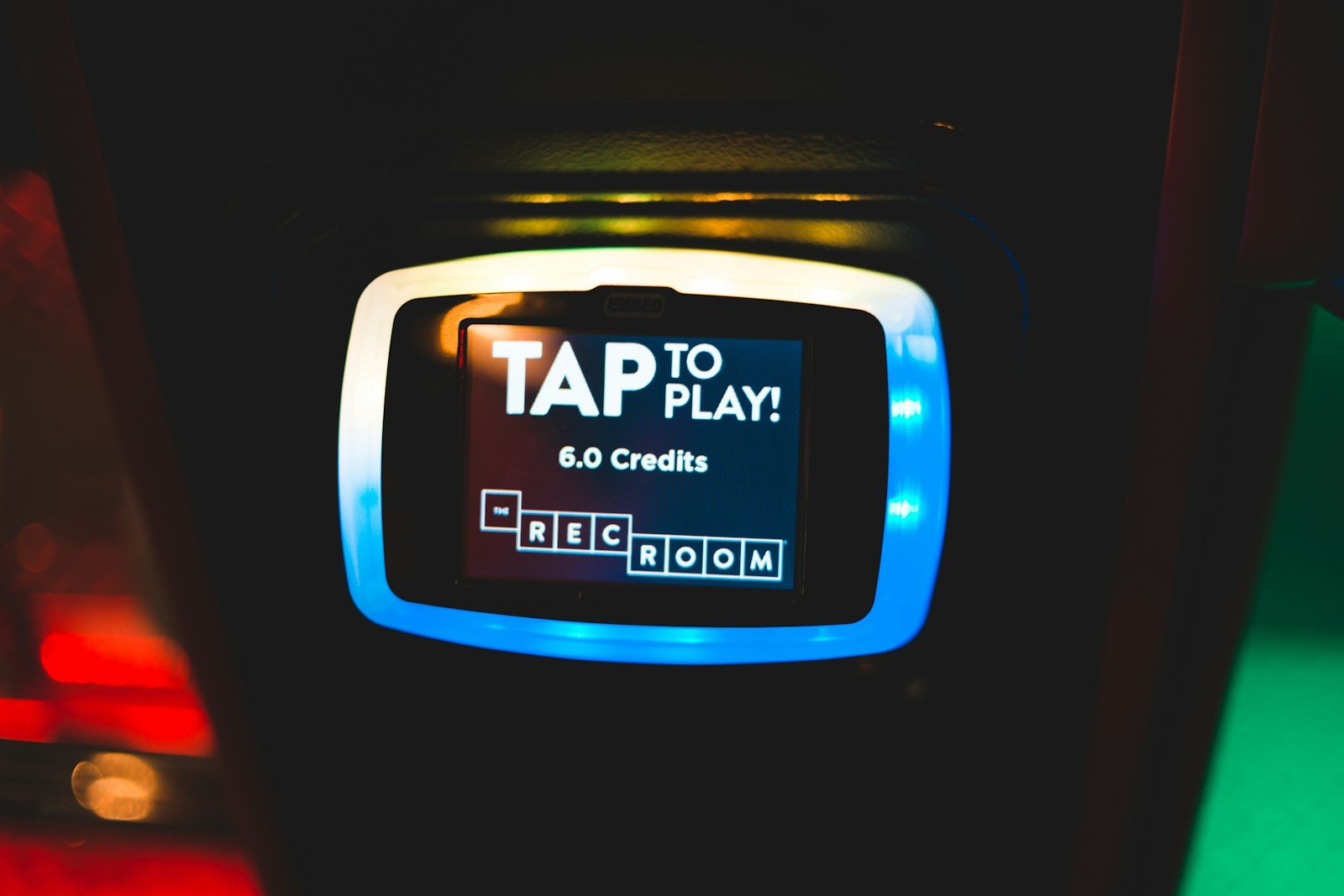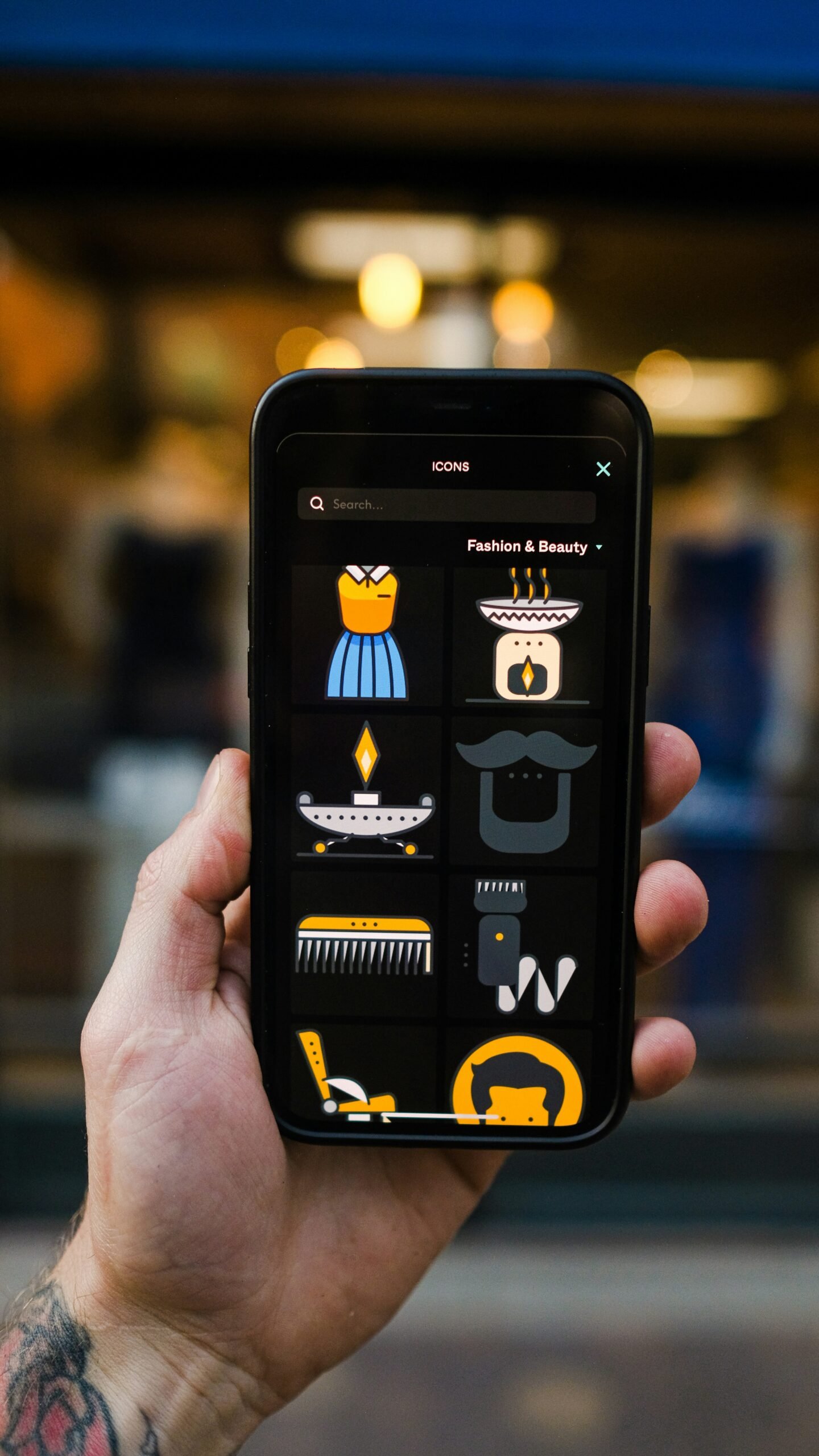
In the modern world, where time is often perceived as a luxury, the demand for efficient time management tools has skyrocketed. Productivity apps have emerged as essential tools that assist users in organizing, tracking, and optimizing their daily tasks. These applications are designed to help individuals effectively manage their schedules, enhance focus, and streamline workflows, ultimately leading to increased productivity.
The significance of productivity apps can be attributed to their ability to provide clarity and structure amid the chaos of everyday commitments. They serve as a digital assistant, enabling users to prioritize tasks, set reminders, and monitor progress on various goals. Whether in a personal or professional context, these applications cater to a wide spectrum of needs, from simple to-do lists to comprehensive project management systems.
As technology has evolved, so too have the capabilities of productivity apps. Many of them now incorporate features such as cloud synchronization, collaborative tools, and time-tracking functionalities, allowing teams—whether in office settings or remote environments—to maintain efficiency across different platforms. This growing reliance on technology to enhance productivity underscores the necessity of integrating digital solutions into our workflow.
Moreover, the accessibility of productivity apps across multiple devices ensures that users can stay organized and focused, irrespective of their location. Whether an individual is managing household chores or overseeing professional projects, the adaptability and versatility of these tools highlight their essential role in modern productivity. As we delve deeper into the types of productivity apps available, it becomes evident that they are not just tools, but rather integral components of an efficient lifestyle.
Task Management Applications
In today’s fast-paced world, effective task management is crucial for optimizing productivity. Task management applications provide users with robust tools to create, organize, and prioritize daily tasks efficiently. These tools often include functionalities such as to-do lists, deadlines, reminders, and collaboration options, making them indispensable for both personal and professional use.
One highly regarded task management app is Todoist, which allows users to easily create tasks with customized labels and due dates. Its user-friendly interface promotes efficiency, letting users categorize tasks by projects and set priorities to focus on what matters most. Additionally, the app’s integration with various platforms, such as Google Calendar, enhances its functionality, enabling seamless tracking of deadlines.
Another popular option is Trello, which utilizes a card-based system to help users visualize their workflow. This app is especially useful for collaborative projects since team members can comment on tasks and move cards through different phases of completion. Trello’s flexibility allows users to customize boards to fit their specific project needs, whether it’s a personal goal or a team assignment.
Asana also stands out in the realm of task management applications. Designed for team collaboration, Asana allows users to assign tasks, set due dates, and track progress in a structured way. The timeline feature is beneficial for visualizing project deadlines and dependencies, aiding users in organizing their workflow effectively.
When selecting a task management application, it is important to consider your personal needs. Factors such as the necessity for collaborative features, the simplicity of use, and integration capabilities with other tools should be evaluated. By determining your specific requirements, you can choose an application that not only enhances your productivity but also fits seamlessly into your daily routine.
Time Tracking Tools
Time tracking tools have become indispensable in our quest for enhanced productivity. By meticulously recording how we spend our time, these applications provide invaluable insights into our daily activities. Understanding how time is allocated enables users to identify productivity patterns and highlight areas that require improvement. When harnessed effectively, time tracking can lead to profound increases in efficiency and better time management.
One of the most popular time tracking applications is Toggl. Known for its user-friendly interface, Toggl allows users to start tracking their time with just one click. The application provides detailed reports and analytics, which can help users visualize their productivity over specific periods. Furthermore, Toggl’s powerful integration capabilities with other productivity tools streamline workflows and enhance overall efficiency.
RescueTime is another effective tool that goes beyond simple tracking. It operates in the background, automatically logging time spent on various applications and websites. This feature allows users to gain a comprehensive overview of how their work hours are divided, along with detailed insights into their behavioral patterns. By understanding their habits, users can adjust their workflows and focus on tasks that drive the most significant results.
Clockify rounds out the top time tracking applications worth considering. Clockify not only tracks time but also offers a collaborative feature that makes it an excellent choice for teams. Users can manage projects, assign tasks, and monitor progress collectively. Additionally, its functionality allows for time logging in real-time, making it easy to stay accountable to one’s schedule.
To integrate time tracking into daily routines effectively, it is advisable to set specific goals. For instance, establishing a goal to track all activities for a week will provide insight into how time is spent and where improvements can be made. With the right strategies in place, adopting these time tracking tools can lead to significantly better time management and enhanced productivity.
Note-Taking Applications
In the modern digital landscape, note-taking applications have emerged as essential tools for individuals seeking to enhance their productivity and efficiency. These applications facilitate the easy capture and organization of information, accommodating various formats such as text, images, and audio. By utilizing such applications, users can streamline their workflow and access notes from multiple devices, making the process of information retrieval significantly more efficient compared to traditional pen-and-paper methods.
One of the most popular note-taking applications is Evernote, which allows users to create multimedia notes that integrate text, images, and documents. Evernote’s tagging system and robust search capabilities make it easy to find specific notes quickly, thus ensuring that pertinent information is never lost in a sea of data. Additionally, its web clipping feature allows users to save articles and web pages directly into their notebooks, promoting seamless research and information gathering.
Another notable application is OneNote, which is part of the Microsoft Office suite. OneNote organizes notes in a notebook format, mimicking the traditional structure but offering enhanced attributes such as drawing tools, audio recording, and the ability to collaborate in real time. This application is particularly useful for students and professionals who require a dynamic platform for note-taking during meetings, lectures, or brainstorming sessions.
Notion has gained popularity for its flexibility, functioning as both a note-taking tool and a comprehensive organizational platform. Users can create databases, task lists, and kanban boards while incorporating notes, all within a single workspace. This versatility makes Notion ideal for project management, allowing teams to consolidate their notes alongside action items and deadlines.
In sum, note-taking applications like Evernote, OneNote, and Notion exemplify the myriad benefits of digital note-taking. They not only facilitate the organization of information but also enhance productivity through efficient retrieval methods and collaborative features. By adopting such tools, individuals can transform their note-taking habits and supercharge their daily workflows.
Focus and Mindfulness Tools
In today’s fast-paced world, maintaining focus and promoting mindfulness during work hours are paramount for enhancing productivity. Numerous productivity apps have been developed specifically to aid individuals in keeping their concentration levels high while simultaneously reducing stress. Among these tools, Focus@Will, Forest, and Headspace are standouts, each serving distinct functionalities that can significantly improve your work efficiency.
Focus@Will is an innovative app that curates a personalized music experience designed to help users maintain their concentration for longer periods. The music incorporates neuroscience principles that enhance focus by reducing distractions. By identifying your preferred styles, Focus@Will can create an environment that allows you to dive deep into your work without interruptions, effectively increasing your productivity throughout the day.
Another noteworthy app is Forest, which adds a gamified element to the process of staying focused. Users plant virtual trees that grow as they work uninterrupted for set intervals. If the user exits the app for any reason, the tree dies, encouraging commitment to the task at hand. This method not only fosters concentration but also promotes a sustainable approach to productivity by enabling mindfulness towards time management.
For those seeking to incorporate mindfulness into their daily routine, Headspace offers resources such as guided meditation and mindfulness exercises. Recognizing that mental clarity is crucial for efficiency, Headspace helps users alleviate stress and cultivate a peaceful mindset, promoting overall well-being while working. These elements can work in synergy, enabling users to sustain focus and minimize distractions.
To further enhance productivity, creating a distraction-free environment is vital. This can involve decluttering your workspace, utilizing noise-cancellation tools, or setting specific times for breaks to recharge your mind. By integrating focus and mindfulness tools into your daily routine, you pave the way for a more efficient and fulfilling work experience.
Collaboration and Communication Apps
In today’s fast-paced work environment, effective communication and collaboration are paramount for enhancing team productivity. Collaboration and communication apps have emerged as essential tools that enable teams to connect, share ideas, and coordinate efforts seamlessly. These applications facilitate the exchange of information, ensuring that all team members are aligned with their objectives and can contribute to shared goals efficiently.
One of the leading choices in this category is Slack, a platform designed for real-time messaging, file sharing, and project management. Its channel-based approach allows teams to create specific discussion spaces, reducing the clutter often associated with lengthy email threads. Furthermore, Slack integrates with a multitude of other productivity tools, allowing teams to streamline their workflows effectively. By utilizing Slack, teams can improve transparency and foster an inclusive atmosphere, encouraging all members to participate actively in discussions.
Another popular option is Microsoft Teams, which is particularly advantageous for organizations already utilizing Microsoft Office products. This platform provides robust video conferencing capabilities, integrated meetings, and comprehensive document collaboration tools. Microsoft Teams supports a centralized workspace that can seamlessly combine chat, video, and file sharing, which enhances productivity by reducing the need to switch between applications. Its ability to easily schedule and organize meetings ensures that critical discussions occur promptly, thus promoting efficient project management.
Google Workspace is also a strong contender in the realm of collaboration apps. With tools like Google Docs, Sheets, and Drive, teams can work simultaneously on documents, making real-time edits, comments, and suggestions. The cloud-based nature of Google Workspace allows for easy access and sharing of information from anywhere, which is particularly beneficial for remote teams. The intuitive interface and powerful functionalities of Google Workspace simplify collaborative efforts, enabling diverse teams to work smarter.
When selecting collaboration and communication tools, it is crucial to consider the specific needs of your team and workflow. By evaluating factors such as compatibility, ease of use, and necessary features, organizations can identify the apps that best align with their goals. Ultimately, utilizing the right collaboration tools can significantly enhance team dynamics and boost overall productivity.
Habit-Tracking Applications
Habit-tracking applications have become a pivotal resource for individuals aiming to cultivate and maintain productive habits. These tools are designed to help users develop routines by encouraging consistency and providing a structured approach to tracking progress. The psychological benefits of monitoring one’s habits cannot be overstated; increased awareness of behaviors fosters a sense of accountability, which is crucial for achieving personal goals.
Among the plethora of habit-tracking applications available today, Habitica stands out as a unique blend of productivity and gamification. By turning habit formation into a game, Habitica engages users through rewards and challenges that motivate them to complete tasks and build healthy habits. This approach not only enhances adherence to routines but also provides a fun and interactive way to manage productivity, appealing especially to younger demographics.
Another popular app is Streaks, which focuses on creating streaks of consecutive days that users accomplish their set tasks. The simple, user-friendly interface allows individuals to set up to twelve habits to track at once, enhancing clarity and focus on their objectives. Streaks instills a sense of pride and accomplishment as users witness their progress visually, further reinforcing their commitment to cultivating productive routines.
Coach.me, on the other hand, emphasizes the community aspect of habit tracking. By connecting users with coaches and fellow members, it provides social support that can enhance motivation and accountability. The incorporation of reminders and the ability to check in with others amplifies the effectiveness of the habit-tracking process, making it easier for users to remain committed to their goals.
Integrating these habit-tracking applications into daily life can be achieved through consistent usage and setting realistic expectations. By establishing a routine of checking in with the app, users can create a habit of their own. Ultimately, the systematic approach provided by habit-tracking applications serves as an invaluable asset for individuals striving to improve efficiency and productivity in their daily lives.
Automation and Integration Tools
In today’s fast-paced digital landscape, automation and integration tools have emerged as vital resources for individuals and teams aiming to enhance their productivity. By automating repetitive tasks, these tools play a crucial role in saving time and minimizing manual effort, allowing users to focus on higher-value activities. Among the most prominent automation tools are Zapier, IFTTT, and Automate, each offering unique capabilities to streamline workflows and facilitate seamless interaction between applications.
Zapier, a widely used automation platform, enables users to connect various web apps and automate workflows without the need for programming knowledge. For instance, a user can set up a “Zap” to automatically save email attachments received in Gmail directly to a specified folder in Dropbox. This not only saves time but also ensures that important files are organized systematically, eliminating the risk of losing essential information.
Similarly, IFTTT (If This Then That) allows users to create custom automations based on trigger-action pairs. For example, one can set up an applet that automatically posts new Instagram photos to a Twitter account, ensuring that content reaches multiple platforms without requiring additional effort. This kind of integration helps individuals maintain an active online presence, while simultaneously minimizing the workload associated with social media management.
Automate, another noteworthy tool, goes slightly further by offering more complex automation scenarios. Users can design multi-step workflows that perform a sequence of actions across various applications. For example, a user could automate the process of gathering data from web forms, processing it in a spreadsheet, and then sending out follow-up emails — all with little to no manual intervention. Such integration of applications not only streamlines everyday tasks but also maximizes efficiency across various processes.
Choosing the Right Productivity Apps for You
In today’s fast-paced world, selecting the right productivity apps can significantly enhance your efficiency. However, the wide variety of options available may overwhelm users. To assist individuals in making informed decisions, it is essential to consider several key factors and evaluate personal needs.
Firstly, the user interface plays a crucial role in user experience. Choose apps that are designed intuitively, with an organized layout, which can aid in minimizing distractions and increasing focus. It is beneficial to opt for apps that allow customization, as personalizing the workspace can improve usability and comfort.
Next, assess the features offered by each app. Identify which functionalities align best with your productivity goals. For instance, if project management is your priority, look for apps that offer task prioritization, deadline tracking, and collaboration tools. Conversely, if you need a simple to-do list, a minimalist approach may suffice. Additionally, cross-platform compatibility is vital. The ideal productivity app should work seamlessly across multiple devices, ensuring that you can stay organized irrespective of whether you are using a computer, tablet, or smartphone.
Your budget is another significant aspect to consider. Many high-quality productivity apps offer various pricing models, including free versions and subscription-based plans. It is advisable to evaluate the app’s value in relation to its cost, as investing in a premium tool may ultimately lead to greater efficiency and time savings.
Finally, a brief self-assessment quiz can be a practical tool. List your productivity needs, preferred features, and device compatibility requirements. This process will guide you in identifying the productivity app that best fits your workflow and enhances daily efficacy. By considering these elements, you can make an informed choice that aligns with your individual productivity goals.






